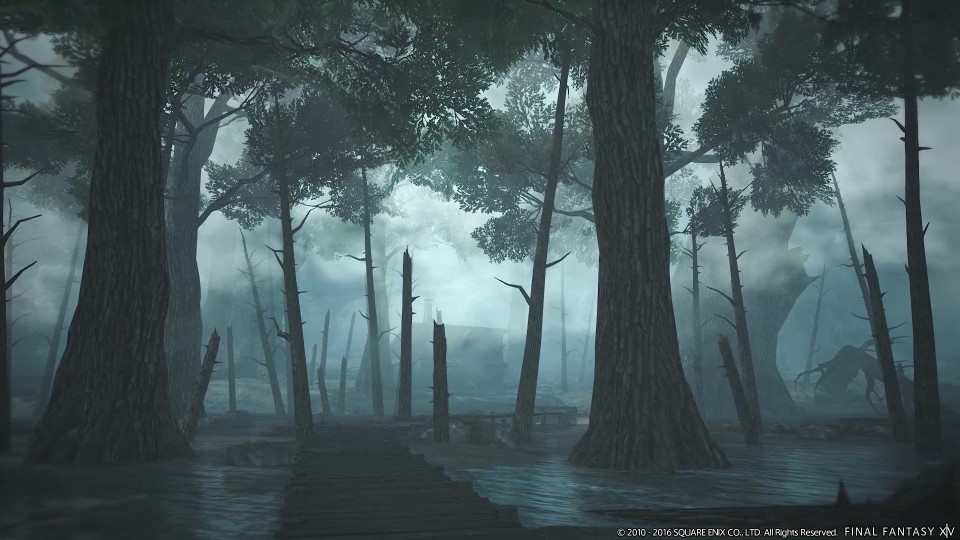It’s incredible to think about how far Final Fantasy XIV has come. After a disastrous original launch back in 2010, a new development team led by Naoki Yoshida rebuilt the game almost entirely from the ground up, and it was relaunched as Final Fantasy XIV: A Realm Reborn to widespread acclaim. It’s gone from strength to strength in the years since, and now stands as one of the best MMORPGs around. The latest expansion, Stormblood, is further proof of that.
In most ways, Stormblood is more of the same. It doesn’t have any of the grand, sweeping reforms that you often see in MMO expansions; instead, its focus is on fine-tuning the experience, expanding the world and story of Final Fantasy XIV, and giving you more things to see and do within the game. You know what? I couldn’t want anything more from it.
After Heavensward diverted our attention away from the threat posed by the Garlean Empire, they’re once again the focus of the story in Stormblood. The Warrior of Light (that’s you) and the Scions of the Seventh Dawn set out to liberate Ala Mhigo and Doma, two city states that have been occupied by the empire for 20-odd years. The journey takes our heroes to the rocky highlands of Gyr Abania and to Asia-inspired Othard continent in the far east. As the Scions travel from place to place, slowly working to inspire rebellion, we get a glimpse of what life is like under the empire, and how the proud people of Doma and Ala Mhigo have been beaten into submission. At the centre of all of this is Lyse, a Scion and a native of Ala Mhigo, who spends the course of the journey coming to accept her role as the person who must lead her people to freedom.
It’s a classic Final Fantasy story – a band of rebel heroes rising up against an evil empire – told with all the character, emotion, and humour we’ve come to expect from the series. It borders on cheesy, but has the perfect balance of sincerity and self-awareness that it never goes over the edge, resulting in something captivating and heartfelt. The end cutscene is particularly moving.

That said, there are some pacing issues. Most of the story plays out in Othard, with the heroes working to revive the Doman Liberation Front. It’s a slow burn, as you make your way from place to place inspiring the people to stand up to their oppressors – from the bustling metropolis of Kugane, to the sleepy farming villages of Yanxia, to the nomadic tribes of the Azim Steppe. The slow-moving plot gives you a chance to really get to know the people involved, and see how imperial occupation affects the people on the ground, and it’s here that Stormblood’s story is at its best. But the Ala Mhigo arc that follows it felt rushed, like the writers had run out of ideas. What should be the most climactic part of the story ends up being the most tiresome.
It probably doesn’t help that the Ala Mhigo arc takes place across Gyr Abania, a rocky mountainous region that gets progressively more drab as you work through it. The first two zones within the region, The Fringes and The Peaks, have their own kind of muted beauty, with autumnal vegetation set against a backdrop of stony spires, cliff faces, and small lakes and streams. By the time you get to The Lochs though, the whole place is just a lifeless expanse of brown rocks, and even the lochs that give this zone its name don’t do much to break that up. It’s a depressing zone – which is thematically appropriate – but not the sort of place that I really want to spend time in.

By contrast, Othard is absolutely stunning, drawing its inspiration from real-world Asia. The island nation Hingashi, where Kugane is situated, is based on Japan, with Edo-period architecture and culture: the people dress in traditional Japanese garb; Kugane is filled with teahouses, shrines, castles, and onsen; and the nation is ruled by a shogun who united the various clans after a bloody age of war not unlike Japan’s own Sengoku period. The Japanese influence extends to the mainland in Yanxia, which is where Doma is based, but it draws on China as well in some of its buildings and the enemies you encounter there. Finally, there’s the Azim Steppe to the north of Yanxia, which is based on the Mongol Empire – hence the warring nomadic tribes and Manchurian-esque clothing.

With these new regions come new dungeons, and Stormblood has some of the most interesting ones yet – both in terms of encounter design, and their look and feel. The first dungeon you run into is the Sirensong Sea, a haunted ship graveyard reminiscent of Final Fantasy V; it’s fairly straightforward, but still manages to build in some interesting boss mechanics, particularly around the final boss’s seduction attacks. Shusui of the Violet Tides, an underwater Japanese-style palace, is noteworthy for its visual design, and in Kugane Castle, Yojimbo’s trademark miserliness makes for an incredibly fun fight. A few of the other dungeons feel a bit more like repeats of what’s come before, especially the ones that have you infiltrating imperial facilities, but all have at least something of interest to offer.